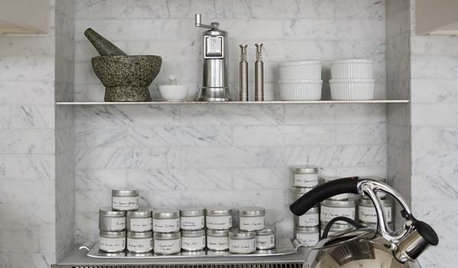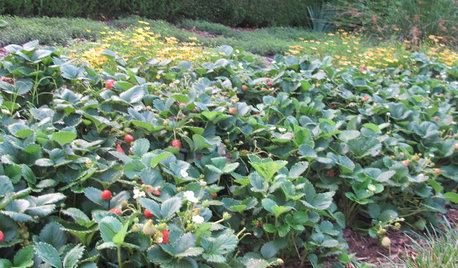6-24-24 Good Fertilizer?
Nikki
13 years ago
Related Stories

KITCHEN DESIGN24 Dramatic Kitchen Makeovers
From drab, dreary or just plain outdated to modernized marvels, these kitchens were transformed at the hands of resourceful Houzzers
Full Story
KITCHEN DESIGN24 Hot Ideas for Stashing Spices
Create a Mini Spice Pantry in a Wall, Drawer, Island or Gap Between Cabinets
Full Story
LANDSCAPE DESIGN24 Garden Paths to Inspire Memorable Journeys
Winding or straight, narrow or wide, densely or sparsely planted — there’s more than one way to design a walk
Full Story
GARDENING GUIDESHow to Switch to an Organic Landscape Plan
Ditch the chemicals for a naturally beautiful lawn and garden, using living fertilizers and other nontoxic treatments
Full Story
REGIONAL GARDEN GUIDESSoutheast Gardener's September Checklist
Fertilize strawberries, plant a tree or two and beckon hummingbirds to your Southern garden this month
Full Story
FARM YOUR YARDHow to Get Good Soil for Your Edible Garden
The nutrients in your soil feed the plants that feed you. Here are tips on getting it right — just in time for planting season
Full Story
GARDENING FOR BUTTERFLIESGardening for the Bees, and Why It’s a Good Thing
When you discover how hard bees work for our food supply, you may never garden without them in mind again
Full Story
GARDENING GUIDES6 Unsung Bulbs for Fall Planting
Don't hang up your spade after summer — plant these unusual bulbs in fall for a spectacular spring show
Full Story
HOME TECH6 Sound Solutions for the iPhone Home
Listen up: An iPhone and one of these stylish audio systems let your music look as good as it sounds
Full Story
FUN HOUZZ10 Fantasy Dining Rooms for a Good Cause
Outlandishly creative or subtle and sophisticated, these designer spaces for Serving Up Style 2013 show admirable imagination
Full StoryMore Discussions







tdogdad
NikkiOriginal Author
Related Professionals
Allen Landscape Architects & Landscape Designers · 70037 Landscape Architects & Landscape Designers · Comstock Park Landscape Architects & Landscape Designers · Grand Haven Landscape Architects & Landscape Designers · Indio Landscape Contractors · Longview Landscape Contractors · Plainview Landscape Contractors · Shirley Landscape Contractors · Southbury Landscape Contractors · Waldorf Landscape Contractors · Wilsonville Landscape Contractors · Kingsburg Landscape Contractors · Worcester Siding & Exteriors · Zion Siding & Exteriors · North Highlands Siding & Exteriorspowderpuff
mksmth zone 7a Tulsa Oklahoma
tdogdad
mksmth zone 7a Tulsa Oklahoma
tapla (mid-Michigan, USDA z5b-6a)
mike_in_maryland
tdogdad
plumejunkie
tapla (mid-Michigan, USDA z5b-6a)
mike_in_maryland
Loveplants2 8b Virginia Beach, Virginia
mike_in_maryland
Loveplants2 8b Virginia Beach, Virginia
mike_in_maryland
Loveplants2 8b Virginia Beach, Virginia